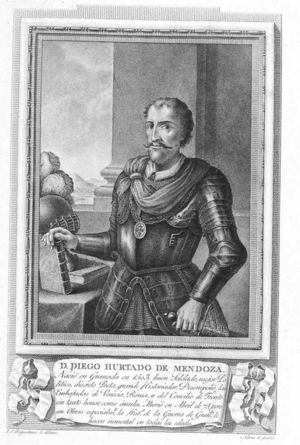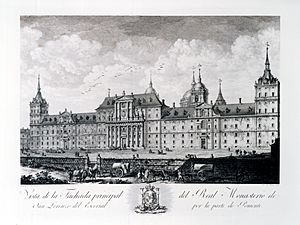José Gómez de Navia facts for kids
José Gómez de Navia was a talented Spanish artist. He was born in 1757 in a place called San Ildefonso and passed away sometime after 1812 in Madrid. He was known for his amazing skills as an engraver and a draftsman. This means he created detailed pictures by carving designs onto metal plates and also drew many beautiful images.
Contents
A Young Artist's Journey
José Gómez de Navia started his art studies at the Real Academia de Bellas Artes de San Fernando. This was a famous art school in Spain. His teacher was a well-known artist named Manuel Salvador Carmona. In 1784, José even won a special prize for his engraving work. This showed how skilled he was from a young age.
Working with Books and Science
José Gómez de Navia often helped create pictures for important books. These books were published by the Imprenta Real, which was the Royal Printing Office. He worked on many scientific books, making sure they had clear and helpful illustrations.
Some of the books he helped with included:
- Elements of Theoretical and Experimental Physics (1787) by a French scientist.
- The Ten Books of Architecture (1787) by Vitruvius, an ancient Roman architect.
- Physical-chemical Elements of General Water Analysis (1794) about how to study water.
- New Inquiries About Kneecap Fractures (1795) by a doctor from Catalonia.
New Art Techniques
José Gómez de Navia was always trying new ways to engrave. He brought a special technique called "stippling" to Spain. Stippling is a way of creating images using tiny dots instead of lines. This method can make pictures look very soft and detailed.
He used this dot technique in his book called Collection of Devout Heads, Taken from Paintings by Famous Artists (1794). He also used it for a portrait of Diego Hurtado de Mendoza in a series called Portraits of Illustrious Spaniards.
Capturing Spain's Beauty
José Gómez de Navia's most famous work is a collection of pictures of the amazing El Escorial. This is a huge palace and monastery built by King Felipe II. The collection is called Collection of Different Views of the Magnificent Temple and Royal Monastery of San Lorenzo de El Escorial.
He started this project on his own because he loved to draw. In 1800, he wrote a letter to the art academy. He explained that he needed more work. So, he spent a summer drawing the beautiful buildings at El Escorial.
Royal Recognition
King Charles IV of Spain was very impressed with José's drawings of El Escorial. The King liked them so much that he asked José to draw more pictures, this time of Aranjuez. The King also gave José a yearly payment of 300 ducats. This was a lot of money back then!
José might have had trouble with his eyesight or other health issues. Because of this, other talented engravers like Tomás López Enguídanos and Manuel Alegre helped him create the final engravings for these projects.
Later Works
After the success of the El Escorial and Aranjuez projects, José worked on similar collections. Other artists like Esteban Boix and Alonso García Sanz also helped with the engravings. His last known work was a series of pictures called Collection of the Best Views and Most Sumptuous Buildings in Madrid (1812).
Images for kids
See also
 In Spanish: José Gómez de Navia para niños
In Spanish: José Gómez de Navia para niños





